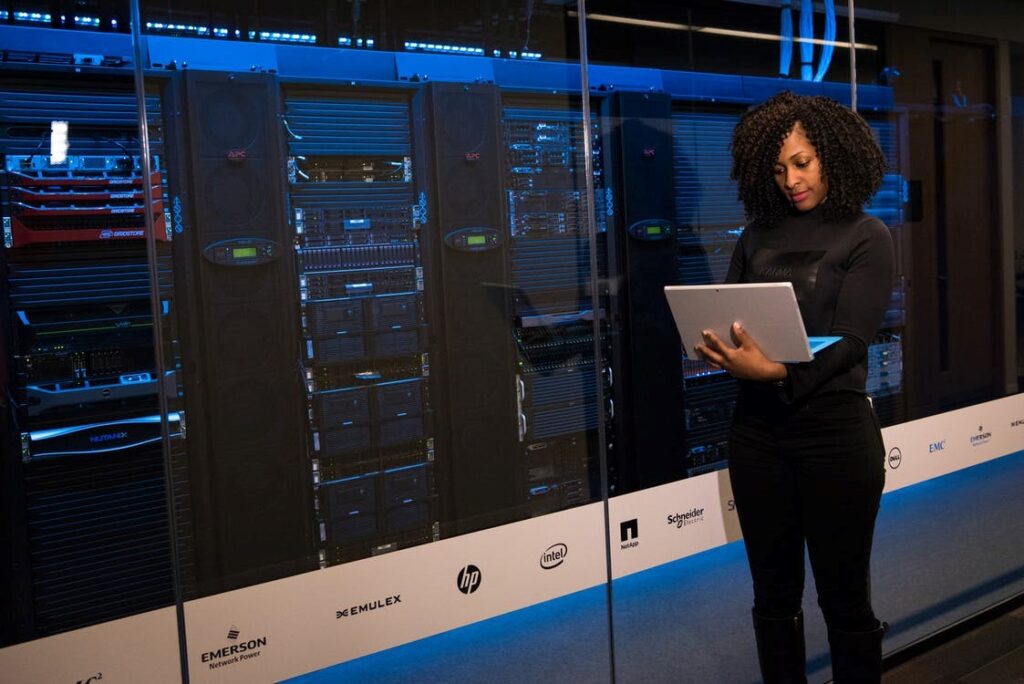In today’s digital era, the importance of data to contemporary enterprises cannot be overstated. It is the cornerstone of critical business functions, serves as the foundation for communication, and acts as a catalyst for innovation. With the relentless expansion of data volumes, the demand for strong and secure high-speed network connections has surged, especially within data centers.
These data centers are the operational brains of the digital universe, where vast amounts of information are processed, stored, and transmitted. At the heart of enabling this high-speed connectivity lies the often underestimated but fundamentally crucial network cabling.
This component is key to facilitating the swift and secure exchange of data, ensuring that businesses can rely on the uninterrupted flow of information necessary for their operations.
The Backbone of Data Center Connectivity

Source: horizonconnects.com
Data centers represent intricate ecosystems, hosting an extensive collection of servers, storage solutions, and network hardware, all synchronized to process, preserve, and disseminate information at unparalleled velocities.
Central to this sophisticated setup is the network cabling system, serving as the vital link that connects these diverse elements, ensuring the smooth transition of data. The effectiveness and dependability of a data center hinge significantly on the caliber and performance of its network cabling.
Premium cabling solutions are engineered to accommodate the escalating needs for bandwidth, reduce signal disruption, and maintain the integrity of data across even the most critical and challenging conditions.
Investigating network cabling providers in Coral Gables gives access to services that guarantee your data center’s backbone is sturdy, dependable, and prepared to handle future demands for individuals looking for professional installation and maintenance of these crucial systems.
Choosing the Right Cabling Solution
When deciding on the right network cabling solution for a data center, various factors need careful consideration. These include bandwidth demands, limitations in distance, and the future scalability requirements. The predominant cabling types employed in data centers are:
Fiber Optic Cabling
Fiber optic cables stand out for their unparalleled data transmission speeds and dependability, positioning them as the top choice for applications requiring high bandwidth and extended distances. Utilizing light for data transmission, these cables remain impervious to electromagnetic interference (EMI), guaranteeing a secure and steady transfer of data.
Twisted Pair Cabling
Cables like Category 6 (Cat6) and Category 6A (Cat6A), which fall under the twisted pair category, find extensive use in shorter distance scenarios, delivering impressive performance for Ethernet networks. With a cost-effective nature and straightforward installation process, they have become a favored option for data centers characterized by moderate bandwidth needs.
Coaxial Cabling
Although not as widespread in contemporary data centers, coaxial cables remain employed in specific applications, notably for cable television and antenna connections. These cables provide effective shielding against electromagnetic interference (EMI) but exhibit constrained bandwidth capabilities compared to fiber optic and twisted pair cables.
Creating and deploying a network cabling infrastructure that is both efficient and scalable is an intricate undertaking demanding meticulous planning and strict adherence to industry standards and best practices.
Projects involving data center cabling frequently entail intricate pathways, cable management systems, and specialized equipment, all designed to guarantee peak performance while minimizing potential points of failure.
Ensuring Data Security and Compliance

Source: kaspersky.com
Beyond facilitating high-speed connectivity, network cabling assumes a pivotal role in upholding data security and compliance within data centers. Given the escalating concerns surrounding data breaches and cyber threats, it becomes imperative to establish robust security protocols at every layer of the infrastructure, including the cabling system.
A critical aspect of ensuring security for network connectivity services and network cabling involves controlling physical access. Data centers must institute stringent policies and procedures to thwart unauthorized entry into cabling pathways and connections.
This may entail the deployment of access control systems, surveillance cameras, and physical barriers to safeguard vital cabling infrastructure.
Moreover, adherence to diverse industry standards and regulations, such as the Payment Card Industry Data Security Standard (PCI DSS), the Health Insurance Portability and Accountability Act (HIPAA), and the General Data Protection Regulation (GDPR), is paramount for data centers.
These regulations frequently stipulate specific criteria for network cabling, encompassing aspects like shielding, grounding, and secure cable management practices, to guarantee the confidentiality, integrity, and availability of data.
Future Proofing for Emerging Technologies
As the rapid evolution of technology unfolds, data centers must remain poised to embrace emerging trends and innovations. The network cabling infrastructure assumes a pivotal role in future-proofing data centers, ensuring they can seamlessly accommodate new technologies and applications that demand heightened bandwidth and reduced latency.
One notable innovation on the horizon is the advent of 5G cellular networks, poised to revolutionize mobile connectivity and unlock a plethora of applications, from autonomous vehicles to remote healthcare.
As 5G gains prominence, data centers must integrate cabling solutions capable of meeting the rigorous demands of these networks, characterized by high-speed and low-latency requirements.
Another frontier of innovation lies in the realm of the Internet of Things (IoT), where billions of interconnected devices and sensors generate extensive volumes of data. Data centers must adapt to the escalating data traffic and processing needs associated with IoT applications, necessitating cabling solutions that deliver high bandwidth and low latency.
Moreover, the ascent of edge computing, wherein data processing and storage shift closer to the data source, is likely to spur the establishment of smaller, distributed data centers or edge data centers.
These entities will require scalable and adaptable cabling solutions that cater to their distinct requirements while upholding stringent standards for performance and security.

Source: istockphoto.com
Conclusion
In the dynamic and data-centric realm of contemporary businesses, rapid and reliable connectivity is not merely a convenience but an imperative. Data centers play a central role in facilitating this connectivity, and their effectiveness relies heavily on the dependability and performance of the network cabling infrastructure.
Through strategic investments in top-tier network cabling solutions and meticulous adherence to industry standards, data centers can guarantee the secure and seamless transmission of data, stay compliant with regulatory mandates, and fortify their infrastructure to accommodate emerging technologies.
As data volumes escalate and novel technologies surface, the significance of network cabling within data centers will only intensify.
Companies that prioritize resilient and scalable cabling solutions position themselves favorably to address the growing demands for high-speed connectivity, ensuring the continuity of business operations, safeguarding data integrity, and securing a competitive advantage in the digital era.
FAQs

Source: comet.ae
What industry standards should data centers adhere to for effective network cabling?
Data centers should adhere to industry standards such as TIA/EIA-568 for structured cabling systems. Following these standards ensures a systematic and uniform approach to network cabling, promoting reliability and interoperability.
How does network cabling contribute to data security in data centers?
The reliability and performance of network cabling directly impact data security by ensuring the secure transmission of information. This helps in safeguarding sensitive data against potential threats or breaches.
What is the significance of scalability in network cabling solutions for data centers?
Scalable network cabling solutions are crucial as they allow data centers to adapt to the growing demands for high-speed connectivity. Scalability ensures that the cabling infrastructure can efficiently accommodate increased data volumes and emerging technologies.



